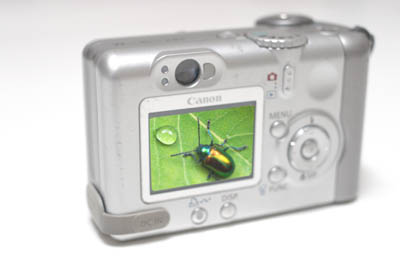
In 1934, a diminutive book by an unknown author seeded the largest conservation movement in history. The book, Roger Tory Peterson's A Field Guide to the Birds, pioneered the modern field guide format with crisp illustrations of diagnostic characters, all in a pocket-sized read. The Guide sold out in a week, but the book's effects are ongoing.
To understand the magnitude of Peterson's impact, consider how naturalists traditionally identified birds. They'd take a shotgun into the field, and if they saw something of interest they'd kill it. Birding was necessarily limited to the landed- and armed- gentry. The technique wasn't so good for the birds either.
Peterson's guide, together with the advent of affordable binoculars, brought nature watching to the masses. Anyone could use Peterson's beautiful illustrations of diagnostic characters to learn their local avifauna, sometimes from the comfort of the living room. The subsequent popularity of birdwatching, now the most practiced outdoor recreation in the United States, is arguably one of the biggest factors behind the conservation and environmental movements of the last half-century. A nation of birdwatchers protects its birds.
We are currently in the midst of a similar transformation, albeit one smaller than that wrought by Peterson. The present awakening concerns creatures only a few millimeters long, and the catalyst is digital photography.
A great many more people are photographing a great many more small things than ever before. A Flickr search on "insects" generates nearly half a million photographs. A Google image search returns over 2 million. Most of this new insect imagery isn't the product of entomologists or specialist macrophotographers. It's from people who have discovered the beauty of insects and arachnids using the gadgetry of the digital revolution.
There seem to be two factors in the rise of arthropod photography. The first is technical. For a variety of reasons related to sensor and lens sizes, digicams have a pretty impressive macro capability relative to the point-and-shoot cameras that served the same segment of the consumer market a technological generation ago. The second has to do with the sheer abundance of insects and arachnids. When people with shiny new gadgets go looking for pretty things to photograph, their yards yield all sorts of entomological treasures.
A fine example of a digital bug convert is Mark Plonsky, who now has one of the most visited insect photography galleries on the web, but there are legions of newly active arthropod photographers: Photographing the Earth, Allon Kira, Brian Valentine, Tal Sapoznikov, Birte Ragland, Pawel Bieniewski. The photo-sharing site Smugmug, in addition to hosting communities for macro and insects, has an active community dedicated just to butterflies. The burgeoning interest in arthropods has supported several new field guides, and the online identification site bugguide.net (highly recommended, by the way) receives thousands of visitors every day.
What are the implications of a larger general interest in arthropods? I don't know, but I would like to think they would be similar to those of Peterson's guide. An elevated interest in biodiversity could help sustain conservation efforts. It certainly means a greater appreciation of life's diversity, and that can't be a bad thing.
If you are one of these new-found macro enthusiasts, give a shout out and link your gallery in the comments.
- Log in to post comments

I start in April 2007, and enjoy it so much. I'm looking forward for the spring and summer.
Ants essentially but more and more others organisms (see list on the side):
http://www4.ncsu.edu/~bsguenar/Index%20pictures.html
Also, I would like to put a link for a website that I found on Internet the other day (I hope that was not from here):
http://alain.laboile.free.fr/photographie/accueil_macro.htm
Here is my insect set on flickr with links to the blog posts.
Well said. And next? A digital revolution by which micro-microscopes mounted with cell phone like cameras are sold at wall mart... and the masses discover the beauty of diatoms. If only. :)
I am a textbook example of exactly what you've discussed in this post -- first came the camera, then came an interest in macros, then came a desire to identify and learn more about my subjects. Although I've always had an interest in nature, I've learned and noticed so much more about the small flora and fauna (especially insects) around me since I began photographing them. The only problem is: Entomology is a wicked field to learn in an informal/haphazard way. Thank goodness for BugGuide.
My photos on BugGuide.
Ever since I got a digital camera with a usable macro mode, I've been photographing arthropods that I find just on my property in the Upper Peninsula of Michigan. Even with that restriction there is no shortage of subjects. For just about a year now, I've been posting one species per week at
http://somethingscrawlinginmyhair.com/
I also have a page about trying to do macrophotography without breaking the bank, using a scavenged microscope frame as a camera mount, and a reversed SLR lens as a macro lens. While the results aren't as good as with a real digital SLR and purpose-made lenses, I am getting much more detailed pictures than with the unmodified camera. The setup is described at
http://somethingscrawlinginmyhair.com/macrophotography-on-the-cheap/
I also occasionally contribute pictures to the Insect Picture Of the Day, at
http://www.insectpod.com/
Couldn't agree more, I've noticed the same rapid rise in an interest in invertebrate photography myself. When visiting nature reserves you tend to see more people photographing insects than birds in recent years!
I'm a nature reserve officer and our bug hunts are now more popular than our bird walks. We've organised an insect photography day in one of nature reserves here in Hastings, UK due to this increased interest.
Here's my flickr link:
http://www.flickr.com/photos/wildhastings/